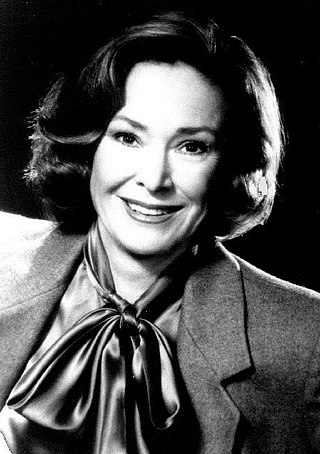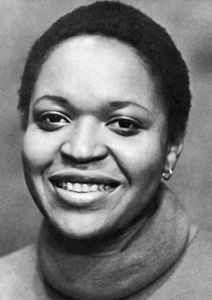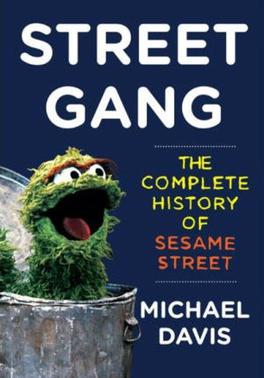
Sesame Street is an American educational children's television series that combines live-action, sketch comedy, animation, and puppetry. It is produced by Sesame Workshop and was created by Joan Ganz Cooney and Lloyd Morrisett. It is known for its images communicated through the use of Jim Henson's Muppets, and includes short films, with humor and cultural references. It premiered on November 10, 1969, to positive reviews, some controversy, and high viewership. It has aired on the United States national public television provider PBS since its debut, with its first run moving to premium channel HBO on January 16, 2016, then its sister streaming service (HBO) Max in 2020.

Sesame Workshop (SW), originally known as the Children's Television Workshop (CTW), is an American nonprofit organization that has been responsible for the production of several educational children's programs—including its first and best-known, Sesame Street—that have been televised internationally. Joan Ganz Cooney and Lloyd Morrisett developed the idea to form an organization to produce the Sesame Street television series. They spent two years, from 1966 to 1968, researching, developing, and raising money for the new series. Cooney was named as the Workshop's first executive director, which was termed "one of the most important television developments of the decade."

The preschool educational television program Sesame Street was first aired on public television stations on November 10, 1969, and reached its 54th season in 2023. The history of Sesame Street has reflected changing attitudes to developmental psychology, early childhood education, and cultural diversity. Featuring Jim Henson's Muppets, animation, live shorts, humor and celebrity appearances, it was the first television program of its kind to base its content and production values on laboratory and formative research, and the first to include a curriculum "detailed or stated in terms of measurable outcomes". Initial responses to the show included adulatory reviews, some controversy and high ratings. By its 40th anniversary in 2009, Sesame Street was broadcast in over 120 countries, and 20 independent international versions had been produced. It has won eleven Grammys and over 150 Emmys in its history—more than any other children's show.
Hooper's Store is a fictional business and meeting-place on the television show Sesame Street. When the show began, the store was one of the four main locations on the set representing the fictional Sesame Street, with the 123 Sesame Street brownstone, the Fix-It Shop, and the carriage house. In the show, the original owner was Mr. Hooper, a gruff but friendly grocer.

Mr. Harold Hooper was one of the first four human characters to appear on the television series Sesame Street. Created by producer and writer Jon Stone, Mr. Hooper is the original proprietor of Hooper's Store, the neighborhood variety store and combination diner/corner store that serves as a place for Muppets and humans to meet and interact. Lee, a character actor and instructor was "perfectly cast" as Mr. Hooper. Mr. Hooper ranked first of all human characters of the show in recognition by young viewers. Mr. Hooper, who has been described as "slightly cranky but good-hearted" and "curmudgeonly", bridges the gap between the older generation and its young audience. Hooper's Store, "an idealized social institution", is an extension of his personality. He had a close relationship with the Muppet Big Bird.
Elmo's World is a segment that is shown in the American children's television program Sesame Street. It always comes last and premiered on November 16, 1998, as part of a broader structural change to the show. It originally lasted fifteen minutes at the end of each episode. The segment ran until 2009, and then returned in 2017. The segment was designed to appeal to younger viewers and to increase ratings, which had fallen in the past decade. The segment is presented from the perspective of a three-year-old child as represented by its host, the Muppet Elmo, performed by Kevin Clash in the original series and Ryan Dillon in the 2017 reboot.

Joan Ganz Cooney is an American television writer and producer. She is one of the founders of Sesame Workshop, the organization famous for the creation of the children's television show Sesame Street, which was co-created by her. Cooney grew up in Phoenix and earned a Bachelor of Arts in education from the University of Arizona in 1951. After working for the State Department in Washington, D.C., and as a journalist in Phoenix, she worked as a publicist for television and production companies in New York City. In 1961, she became interested in working for educational television, and became a documentary producer for New York's first educational TV station WNET. Many of the programs she produced won local Emmys.

Pippin is a 1972 musical with music and lyrics by Stephen Schwartz and book by Roger O. Hirson. Bob Fosse, who directed the original Broadway production, also contributed to the libretto. The musical uses the premise of a mysterious performance troupe, led by the Leading Player, to tell the story of Pippin, a young prince on his search for meaning and significance. The 'fourth wall' is broken numerous times during most traditional productions.

Alaina Reed Hall was an American actress and singer who portrayed Olivia Robinson, Gordon's younger sister, on the PBS children's television series Sesame Street, and Rose Lee Holloway on the NBC sitcom 227.

William Lee was an American actor who appeared in numerous television and film roles, but was best known for playing Mr. Hooper, the original store proprietor of the eponymous Hooper's Store. He was one of the four original human characters on Sesame Street, from the show's debut in November 1969 until his death on December 7, 1982, at the age of 74.
The Robinson family is a fictional family in the children's television series Sesame Street. The family consists of high school science teacher Gordon and his wife, Susan, a nurse. Later, the family expands to include their adopted son, Miles, as well as Gordon's sister, Olivia, his father, Mr. Robinson, and a brother. As African Americans, the family was created as leads for the show, originally targeted to underprivileged inner city children. Even as human roles were slowly reduced over the years, their characters maintained a constant presence.

"Snuffy's Parents Get a Divorce" is the name of an episode on the children's television program Sesame Street. Produced in 1992, it never aired because tests revealed several unintended negative effects. Sesame Street has a history of addressing difficult topics as part of its affective curriculum goals, including death, marriage, childbirth, and disaster. Extensive research was conducted before these episodes were written and produced to determine their focus, and after they aired, to analyze their impact on viewers. This was the case for "Snuffy's Parents Get a Divorce." The show's producers had expressed a desire to produce the episode as early as 1989, and they were convinced that it was a topic they should address after the US Census Bureau reported that 40% of American children had experienced divorce.
A wide variety of characters have appeared on the American children's television series Sesame Street. Many of the characters are Muppets, which are puppets made in Jim Henson's distinctive puppet-creation style. Most of the non-Muppet characters are human characters, but there are many characters that are animated.

Street Gang: The Complete History of Sesame Street is a non-fiction book chronicling the history of the children's television program Sesame Street. Street Gang is journalist and writer Michael Davis's first book, published by Viking Press in 2008. On bookshelves in time for the show's 40th anniversary in 2009, the book developed out of a TV Guide article Davis wrote to commemorate the show's 35th anniversary in 2004. Davis spent five years researching and writing the book, and conducted hundreds of interviews with the show's creators, cast, and crew.

Children and Television: Lessons from Sesame Street (1974) is a non-fiction book written by Gerald S. Lesser, in which he describes the production of Sesame Street, and the formation and pedagogical philosophy of the Children's Television Workshop. Lesser was a professor at Harvard University, studying how social class and ethnicity interacted with school achievement and was one of the first academics in the US who researched how watching television affected children and their development. He was initially skeptical about the potential of using television as a teaching tool, but he was eventually named as the advisory board chairman of the Children's Television Workshop (CTW), the organization created to oversee the production and research of Sesame Street, and was the show's first educational director. Lesser wrote the book early in Sesame Street's history, to evaluate the show's effectiveness, to explain what its writers, researchers, and producers were attempting to do, and to respond to criticism of Sesame Street.

Music has been a part of the children's television show Sesame Street since its debut on PBS in 1969. For the first time, music was used as a teaching tool on a TV program for children; the songs written and performed on the show fulfilled specific purposes and supported its curriculum. The music on Sesame Street consisted of many styles and genres, but was consistent and recognizable so that it could be reproduced. The producers recorded and released dozens of albums of music; many songs became "timeless classics". In order to attract the best composers and lyricists, CTW allowed songwriters to retain the rights to the songs they wrote, which allowed them to earn lucrative profits. Sesame Street Book & Record, recorded in 1970, went gold and won a Grammy. As of November 2019, Sesame Workshop has partnered with Warner Music Group's Arts Music division to reform Sesame Street Records to make the music of Sesame Street fully available.
The children's television program Sesame Street premiered in 1969 to high ratings, positive reviews, and some controversy, which have continued during its history. Even though the show aired on only 67% of American televisions at the time of its premiere, it earned a 3.3 Nielsen rating, or 1.9 million households. By its tenth anniversary in 1979, 9 million American children under the age of six were watching Sesame Street daily. Its ratings declined in the 1990s, due to societal changes. A survey conducted in 1996 found that by the age of three, 95% of all American children had watched it. By its fortieth anniversary in 2009, it was ranked the fifteenth most popular children's show.

Merry Christmas from Sesame Street is a children's Christmas album featuring characters from Sesame Street and released in 1975 by the Children's Television Workshop and Children's Records of America. The album was nominated for the 1976 Grammy Awards, but lost to another Sesame Street album, Bert & Ernie Sing-Along.
David Langston Smyrl, sometimes credited professionally as David L. Smyrl, was an American actor and television writer. He was best known for his role of Mr. Handford, the fictional retired firefighter who ran Hooper's Store on Sesame Street from 1990 to 1998. Smyrl won eight Emmy Awards for his work on Sesame Street during his time on the show.









